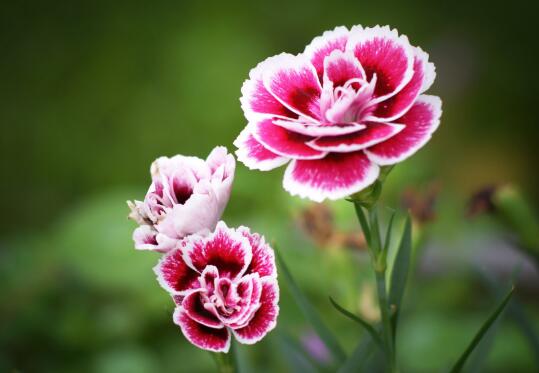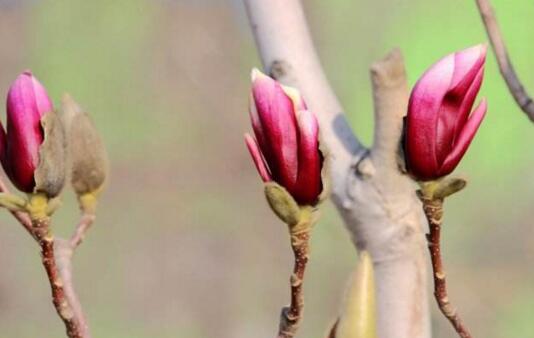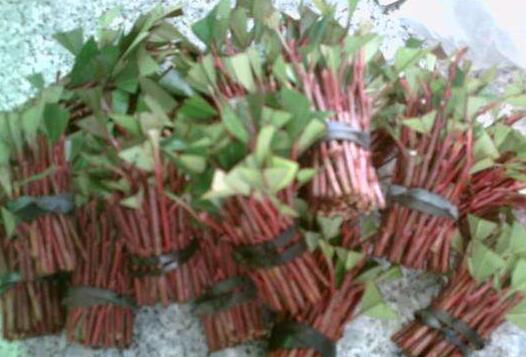How to propagate carnation flower, the propagation method / sowing / cutting / ramet of carnation flower
Carnation is a kind of plant originating in the north of our country. Nowadays, it is cultivated in many areas of our country. With more and more people raising it, people are more concerned about how to reproduce carnation. What are the breeding methods of carnation? Next, the editor will take you to learn about it.
First, how to reproduce the carnation flower

II. Propagation methods of Carnation Flower
1. Sowing and reproduction
Preliminary preparation: when sowing and propagating the carnation, it is usually carried out in September every year, and the climate of this period is more suitable, which can improve the germination rate of seeds, and it is best to choose a relatively loose soil before sowing, which is bound to have better drainage and can better absorb nutrients.
Sowing method: in the breeding methods of carnation, sowing and reproduction is a common way. We need to soak the seeds for 3-5 days before sowing, which can shorten its germination cycle. When sowing, we can evenly sow the seeds on the soil surface, and then cover the soil with 2-3cm for watering, watering once thoroughly, and then basically 10 days after the effect can emerge.
two。 Cuttage propagation
Preliminary preparation: in cuttage propagation, the selection of cuttings is very important, it is best to choose branches that grow more robust and disease-free, so that they will be higher when saved back. As for the soil is the same as above, the editor will not repeat it here.
Cutting method: in the propagation method of carnation flower, cutting propagation is a relatively simple method. When cutting, we can use chopsticks to cut an eye in the soil, and then insert the cuttings from the eyes, so that it is not easy to hurt the cuttings. After that, the soil can be flattened and watered thoroughly. Generally, it can take root in about 15-20 days.
3. Ramet propagation
Preliminary preparation: when ramet reproduction is carried out, it is generally best to be in spring and autumn every year. The climate of these two seasons is more suitable, which can greatly improve the survival rate of ramets. When selecting ramets, we should separate the old and new plants that had flowered in the previous year and replant them.
Ramet method: in the propagation method of carnation flower, ramet propagation is a kind of propagation method that is less used, but the survival rate is not bottom. ramet propagation mainly uses the old branches after flowering the previous year to plant ramets. Generally, if the ramet is carried out in spring, we need to pay attention to drainage in summer, fertilize frequently in September, and blossom again in October.
How to reproduce carnation flower? there are three propagation methods of carnation flower.
How to propagate Carnation 1. Sowing and Propagation methods
The sowing time of carnation is usually carried out in September every year. Sowing in the open field nursery bed, keeping the basin soil moist after sowing, sprouting 5 days after sowing, seedling emergence about 10 days, and the suitable temperature for seedling growth is 10 ~ 20 ℃. When the seedling has 4 or 5 leaves, it can be transplanted and blossom in the next spring. It can also be broadcast in the open field in September or in the cold room from November to December, and planted in the open field in April of the following year.
2. Cutting propagation method.
The cutting propagation time of carnation flower is generally from October to late February to March of the following year. 5 cm long shoots are selected as cuttings in the luxuriant period of branches and leaves, and the main root is 15-20 days after cutting.
3. The method of ramet propagation.
The ramet propagation of Phyllostachys pubescens can be carried out in autumn or early spring by using the old plant after anthesis. For example, it can split in April, pay attention to drainage in summer, strengthen fertilizer and water management after September, and blossom again in early October.
The propagation method of carnation is a perennial herb of the genus Caryophyllum in the family Caryophyllaceae, one of the traditional Chinese flowers. At present, many ornamental plants have been introduced and widely cultivated all over the world, and a large number of cultivated species have been cultivated. The carnation flower gets its name because its stem has nodes and is inflated like bamboo. The plant type of carnation is low, the stem is like bamboo, the leaves are green, and the flowering period is from April to October, concentrated from April to May. Capsule moment orbicular or oblong, seeds oblate, dark brown. Xi Yang, cold tolerance, drought tolerance, waterlogging, like good drainage, fertile sandy loam. It is cold-resistant but not resistant to heat, and likes sunny, highly dry, ventilated, and well-drained fertile loam. Sowing, cutting and split propagation are commonly used in propagation. The optimum temperature for seed germination is 21-22 ℃. Sowing and propagation is generally carried out in September, sowing in the open field seedbed, keeping the basin soil moist after sowing, sprouting 5 days after sowing, seedling emergence about 10 days, and the suitable temperature for seedling growth is 10-20 ℃. It can be transplanted when the seedling has 4-5 leaves, and it can also be planted in the open field in September or in the cold room in November-December, and planted in the open field in April of the following year. Cutting propagation is carried out from October to late February to March of the following year, and the shoots are cut 5-6 cm long at the peak of branches and leaves, and the main roots are cut 15-20 days after cutting. Ramet propagation is mostly done after flowering using old plants, which can be carried out in autumn or early spring. For example, it can split in April, pay attention to drainage in summer, strengthen fertilizer and water management after September, and blossom again in early October. There are often rust and red spiders. Rust can be sprayed with 1500 times of verapamil wettable powder and red spiders with 1500 times of omethoate EC. The whole grass or root of carnation can be used as medicine. It has the effect of clearing heat and diuresis, breaking blood and dredging menstruation. Potted carnation requires adequate basal fertilizer, 2-3 plants per pot. Seedlings grow to 15 cm high to remove the terminal bud, promote its branches, and then pay attention to the appropriate removal of axillary buds, otherwise more branches, will make nutrients scattered and flowering small, appropriate removal of axillary buds to concentrate nutrients, can promote large and colorful flowers. During the growth period, it should be placed in the sunny, well-ventilated place to maintain, keep the basin soil moist, and apply mature thin liquid fertilizer about every 10 days. There are too many Rain Water in summer, pay attention to drainage and loosen the soil. Phyllostachys pubescens is easy to cross, and those who leave seeds should be planted in isolation. Some leaf axillary buds should be removed in time before flowering, mainly to ensure that the top buds bloom. It is advisable to water less in winter. If the temperature is kept at 5-8 degrees, it will blossom continuously in winter and spring.
- Prev

How to reproduce Magnolia Magnolia? the breeding method of Magnolia Magnolia / five methods can be used.
Magnolia is a perennial plant. If the breeding method is correct and the environment is right, it can blossom many times and the flowers are gorgeous and elegant, so how can Magnolia reproduce scientifically in the process of planting? Today, the editor will introduce to you several common breeding methods of Magnolia.
- Next

How to propagate Photinia rugosa, cutting technique / learn seven steps to propagate easily
With more and more people planting Photinia rubra, the propagation method of Photinia rubra has attracted much attention. As a kind of foliage plant with strong germination and rapid growth, how to reproduce Photinia rubra is more suitable. Let's take a look at the cutting techniques of Photinia rugosa which we are more concerned about.
Related
- Fuxing push coffee new agricultural production and marketing class: lack of small-scale processing plants
- Jujube rice field leisure farm deep ploughing Yilan for five years to create a space for organic food and play
- Nongyu Farm-A trial of organic papaya for brave women with advanced technology
- Four points for attention in the prevention and control of diseases and insect pests of edible fungi
- How to add nutrient solution to Edible Fungi
- Is there any good way to control edible fungus mites?
- Open Inoculation Technology of Edible Fungi
- Is there any clever way to use fertilizer for edible fungus in winter?
- What agents are used to kill the pathogens of edible fungi in the mushroom shed?
- Rapid drying of Edible Fungi

